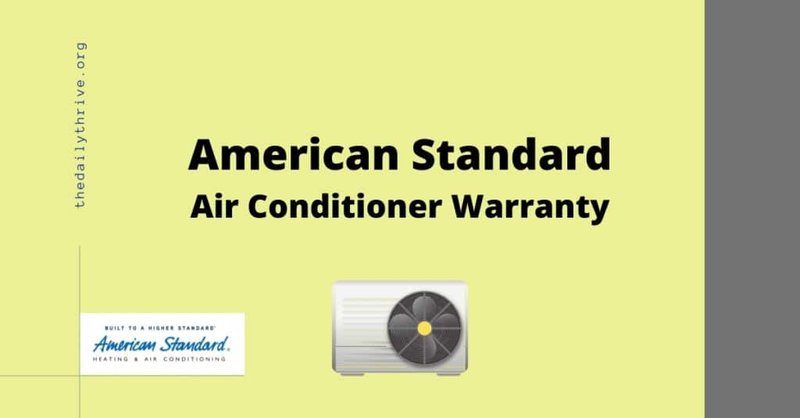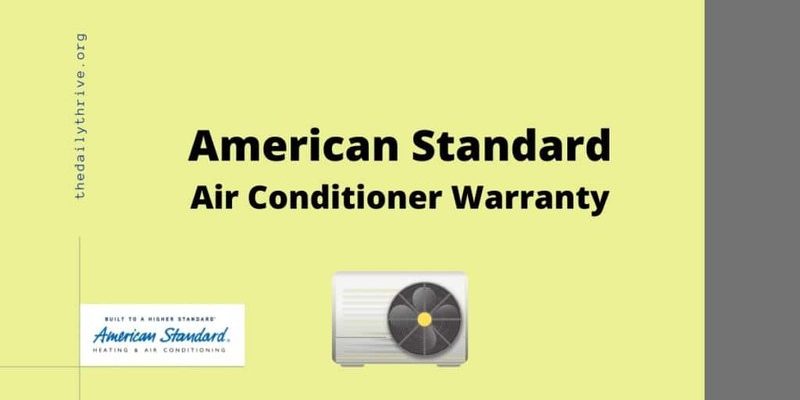
Here’s the thing: warranty processes aren’t always straightforward, especially for big, complex systems like HVAC units. You might have questions like, “Where do I even find my warranty info?” or “How do I know if my system is still covered?” Let me explain how to check warranty status for your American Standard HVAC system, step by step. You’ll find this helpful whether you just bought your system, or it’s been humming away for a few years and you want peace of mind.
Why Checking Your American Standard HVAC Warranty Actually Matters
You might be wondering, “Is it really necessary to check my HVAC warranty?” The short answer: yes. Warranties protect you from unexpected repair costs. HVAC systems aren’t cheap to fix—imagine the price of a new compressor or circuit board. Knowing your warranty status can determine if you should DIY, call the pros, or prepare your wallet.
Warranties also have expiration dates, and some parts might have different coverage lengths. For example, the compressor might have a longer warranty than other components. If you don’t know what’s covered or when your warranty expires, you could end up paying for a repair that would have been free if you’d checked earlier. It’s like having an umbrella—you don’t realize how important it is until it starts raining, right?
Plus, if you’re planning to sell your home, a valid HVAC warranty is a selling point. It reassures buyers that the system won’t turn into a costly headache soon after they move in. So, keeping tabs on your warranty status isn’t just smart—it’s practical.
Where to Find Your American Standard HVAC Warranty Information
Here’s the tricky part: warranty info isn’t usually plastered on your unit or manual in big letters. It’s often tucked away in paperwork or stored online. The first place to check is your original purchase documents. If you bought your system from a dealer or HVAC contractor, they should have given you a warranty statement or contract.
If those papers are MIA (it happens!), don’t panic. You can still look up warranty details using the unit’s serial number and model number. These numbers are usually printed on a metal plate attached to your furnace, air handler, or outdoor condenser unit. Try to locate them—sometimes it’s on the side or back of the unit.
Once you have these numbers, you can visit the official American Standard Heating & Air Conditioning website. They offer an online tool or a customer service number where you can check warranty status by inputting those codes. This digital method is becoming more common and convenient, especially if you lost all paperwork.
Step-by-Step: How to Check Your Warranty Status Online
Let me explain the online process—because honestly, it’s easier than you might think. Here are the basic steps:
- Step 1: Find your model and serial numbers on your HVAC unit.
- Step 2: Head over to the American Standard official website and look for the warranty check page.
- Step 3: Enter your model and serial numbers into the fields provided.
- Step 4: Submit the form and wait for the system to fetch your warranty details.
The results will usually tell you start and end dates of coverage, what parts are included, and any special conditions. For example, some warranties require annual maintenance by a certified technician to stay valid. If you’ve ever skipped those tune-ups, that might affect your coverage.
Pro tip: keep a screenshot or printout of your warranty status info for your records. You never know when you’ll need to show proof.
What If You Can’t Find Your Warranty Details Online?
Here’s a real-world scenario: you enter your serial number online, but the system says “No warranty found.” What now? There are a few reasons this might happen:
- Your system is too old and the warranty expired.
- The serial number was entered incorrectly.
- The warranty wasn’t registered properly during installation.
If you’re sure the serial number is correct, try calling American Standard customer support directly. They can often look up your warranty using other info, like the dealer’s name or installation date. Sometimes, warranties must be registered within a certain time after purchase, so if the dealer missed that step, it might not show up.
If your warranty is expired or wasn’t registered, don’t lose hope. Some HVAC contractors offer extended or third-party warranties, but those are separate from American Standard’s official coverage. Knowing this helps you consider your options before making repair decisions.
Understanding What’s Typically Covered Under American Standard Warranties
OK, suppose you get the warranty info, but it’s filled with jargon and fine print. What does it actually cover? Here’s a quick rundown:
- Limited Warranty: Usually covers defects in materials and workmanship for a set number of years—often 5 to 10 years.
- Compressor Warranty: The compressor, a costly part, often has a longer warranty (sometimes up to 12 years) but might require registration.
- Parts Warranty: Covers replacement of defective parts but not labor costs for repairs.
- Labor Costs: Usually, you’re responsible for paying the technician unless you have a service contract.
Here’s the thing: warranties don’t cover damage caused by neglect, improper installation, or failure to perform regular maintenance. That’s why keeping track of tune-ups and fixing small issues quickly is so important. If you don’t, you risk voiding your warranty.
Knowing these details helps you ask the right questions when your system needs a repair. For example, if your compressor is dead and it’s still under warranty, you can save a lot on parts.
How to Keep Your Warranty Valid and Avoid Common Pitfalls
You might be thinking, “I got the warranty—now what?” Here’s the honest truth: having a warranty doesn’t automatically guarantee you’ll get free repairs. You have to follow some rules.
- Register Your Warranty: Some American Standard warranties require you to register the system within a specific time after installation. Missing this can void your coverage.
- Schedule Regular Maintenance: Annual inspections by certified HVAC technicians aren’t just good for performance—they’re often mandatory for keeping warranties valid.
- Keep Records: Save invoices, service reports, and any other paperwork to prove you’re maintaining the system correctly.
- Use Authorized Service Providers: Repairs done by unlicensed or unauthorized contractors might void your warranty.
Honestly, these steps aren’t just about legalities. They help your system last longer and perform better. Think of it as treating your HVAC like a car—regular oil changes keep the engine running smooth and keep your warranty intact.
What If Your HVAC Warranty Has Expired?
Sometimes, no matter how careful you are, warranties run out. You might look up your status and see dates that passed years ago. So, what now?
First, don’t panic. An expired warranty doesn’t mean your system is doomed. It just means you’re on the hook for repairs or replacements. Here are some options:
- Service Contracts: Consider buying a maintenance agreement from a trusted HVAC company. These often cover routine repairs and regular checkups.
- DIY Troubleshooting: For minor issues, like replacing batteries in the remote or resetting the system after a power outage, a little DIY can help save money.
- Get Multiple Repair Quotes: Don’t settle for the first estimate. Sometimes a second opinion can save a bundle.
- Plan for Replacement: If your system is old and prone to breakdowns, it might be more cost-effective to start budgeting for a new unit.
Here’s a tiny secret: many technicians can extend the life of your HVAC unit beyond the warranty with proper tune-ups. So, even without that official safety net, you can keep your system comfortable for a while.
Wrapping It Up: Your Warranty Status Is Worth Checking
Honestly, checking your American Standard HVAC warranty status isn’t just paperwork—it’s peace of mind. It’s like having a map before heading on a road trip; you want to know what obstacles might pop up and where your safety nets are. By knowing your warranty details, you avoid surprises, plan wisely, and get the most out of your investment.
So, next time you hear a weird click from your HVAC or feel your house isn’t quite the cool oasis it should be, don’t just assume the worst. Check your warranty first—it might just save you time, money, and headache. And if you can’t find that info, don’t hesitate to reach out to American Standard or your installer. After all, your comfort depends on it.
